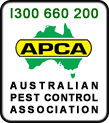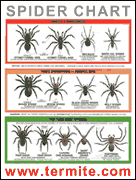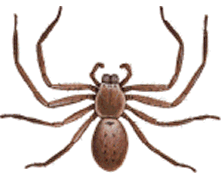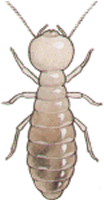| Kitchen & Pantry Pests - Pest Control methods
|
| |
Stored Products Pests - Food Pests - Pantry Pests - Kitchen Pests |
|
|
|
|
|
Stored product pests - insects that infest dry or stored food products - most are beetles or moths - beetle adult and larvae eat food products - larvae of moths eat food products - adult moths do not.
Often found in the kitchen or pantry of domestic and commercial premises - most often first seen when the adults are crawling or flying about the kitchen or pantry - such insects prefer to live and breed best under warm, humid conditions - conditions often found in kitchen cupboards - since most do not hibernate, reproduction is continuous throughout the year and can build up rapidly if left undisturbed. |
|
|
|
|
|
Source of Infestation - Susceptible Food Products |
|
|
|
|
|
Brought in with foodstuffs - stored product or pantry pests are most often brought into the kitchen or pantry in infested food packages - from here, they spread to other susceptible products.
Some fly in through open doors and windows - pantry infestations of carpet beetles and larder beetles may be due to a change of habitat – from products containing wool - fur - feathers - dried food products - larder beetles are attracted to the fat in dry dog and cat food - book lice, like to feed on starchy materials and may infest dried food products after first feeding on non-food products.
Susceptible food products include - grains - flour - bran - cereal - breakfast foods - nuts - seeds - dried fruits - crackers - biscuits - cookies - matzos - macaroni - spaghetti - sweets - candy – chocolate - cocoa - cheese - dried meats - dry dog and cat food - bird seeds - cornstarch - dried soup mixes - dehydrated foods - spices - especially red pepper - paprika - chilli powder. |
|
|
|
|
|
The most commonly found Stored Product Pests in Kitchen & Pantry |
|
|
|
|
|
Most common pantry food pests found in Australian homes, commercial food handling premises and restaurants are (1) Indian meal moth (2) saw-toothed grain beetle (3) rice weevil ...more details below:
|
|
|
|
|
|
|
|
|
Rapid life cycle - in about a month - the adult Indian Meal Moth can lay her 200 to 300 eggs - which hatch into "larvae" or worm-like grubs - that feed on foodstuffs - later pupate and metamorphoses into an adult Indian Meal Moth - which in turn lays her 200 to 300 eggs - and so on - obviously a severe infestation can occur if the stored food products are left undisturbed for several months.
Winged adult Indian Meal Moth - a small insect - about 2 cms in length - wings lie flat along the body when at rest - front wings are light tannish colour on front third - back two thirds are reddish-brown with a coppery lustre - it is only the larvae (worm-like grub) that eat foodstuffs.
The larvae surrounds its feeding area with a tunnel-like web - at maturity they wander to find a place to pupate - the larvae is off-white in colour - about 10 to 15 mm long at maturity - feed for 1 to 2 months - then construct a white silken cocoon - pupate and later emerge as adult Indian Meal Moths. |
|
|
|
|
|
The Saw-Toothed Grain Beetle |
|
|
|
|
|
Adult - a small brownish beetle - about 1/10-inch long - with six tooth-like projections on either side the thorax just behind the head.
Larvae - is worm-like in appearance - less than 1/8-inch long - dirty white in colour.
Both the larva and adult cause damage to foodstuffs - by their feeding - adult beetle looks like a small ant - and can penetrate tiny cracks and crevices to get into unopened food packages.
Life-Cycle - the adult female will lay its eggs in or near food products - eggs hatch into larvae in a week or less - larvae feed for 2 to 3 weeks - then pupate within a protective cocoon-like covering made by sticking small bits of food together - about a week later they emerge as adults - infestations can build up rapidly if left undisturbed since adults can live and breed for as long as three years.
Food stuffs preferred - both larva and adult feed on a wide variety of stored products - grains cereals - breakfast foods - flour - bread meal - corn meal - corn starch - cookies - crackers - dried fruits - vegetables - nuts - dried soup mixes - dry dog and cat food - garden seeds - bird seed - macaroni - spaghetti - yeasts - chocolate - candy - dried meats - and similar products.
|
|
|
|
|
|
|
|
|
Adult rice weevil - a small black snout beetle about 1/8-inch long - four reddish or yellowish spots on its back - the larva is legless - has a short stout - whitish body - tan head.
Food products affected - rice weevils - a pest of whole grain products - rice - wheat - kernel corn - table beans - nuts - seeds - especially sunflower seeds - pasta - flour.
Usually hidden - rice weevils feed inside the whole grain - they hide their entrance holes so that the grain looks normal - most often seen as an adult beetle - the rice weevil can also be found in solidified milled products such as macaroni and cake flour.
The female weevil eats out a cavity in a whole grain product large enough for an egg - lays the egg in it and seals over the cavity - the egg hatches - the larvae feed inside and remain there until it transforms to an adult - the entire life cycle can be completed in about one month. |
|
|
|
|
|
Other - less common - Stored Product Pests |
|
|
|
|
|
Whole grains - internal feeders - less frequently encountered - seldom seen until the adults emerge from the grain - granary weevil - Angoumois grain moth - bean weevil - lesser grain borer.
External feeders or scavengers - feed on grain after seed coat is broken either mechanically or by some other insect - some feed only on materials that are damp or mouldy - the Mediterranean flour moth - confused flour beetle - red flour beetle - cigarette beetle - drugstore beetle - spider beetle - black carpet beetle - larder beetle - cadelle - yellow mealworm - grain mite - psocid booklice - others. |
|
|
|
|
|
Pest Control - Stored Product Pests - Pantry Pests |
|
|
|
|
|
Inspection - many pantry pests are strong fliers - their larvae can crawl some distance from a source of infestation - the source of infestation is usually limited to a small area such as the kitchen - a single cabinet - or a single susceptible product - first find the source of the infestation and eliminate it - use plastic garbage bags to dispose of contents of infested food storage containers.
Sterilization - may be useful to eradicate a light infestation by placing such container packages in the refrigerator freezer compartment for two or three days.
Sanitation - regularly clean all shelves in storage areas - most pantry pests can breed in food particles spilt from packages - accumulate in cracks and corners - the insects reinfest other foods closeby.
Reduce shelf life - buy only small quantities of susceptible food products - minimize shelf life in your pantry or storage area - especially in summer - carefully examine containers at purchase to be pest-free - ensure turnover period of foodstuffs is less than 2 to 4 weeks.
Air-tight storage - dry foods - clean glass or metal containers - tight fitting air-tight lids - clean containers thoroughly before storing food products - do not store undisturbed for long periods of time.
Restaurants & Domestic Premises - find the source of infestation and eliminate it - use plastic garbage bags to dispose of infested food product - thoroughly clean shelves where infestation present or likely - use of pyrethrum insecticide spray to such areas - particularly cracks and corners - pheromone traps may be useful to monitor success of the pest control program.
Grain Silos & Food Warehouses - recommend thoroughly clean premises and production process - rigourous inspection of incoming food product - monitoring, inspection and treatment of storeage and production facilities - some foodstuffs require phospine fumigation - imported food products or export items - Australian Quarantine & Inspection Service AQIS requirements must be met.
Pheromone Traps - available for Indian Meal Moths - pheromone attracts the male moths to sticky surface - generally used after infestation has been found and eliminated - useful to monitor and detect any remaining adult Indian Meal Moths rather than as a reliable pest control method. |
|
|
|
|
|
|
|
|
 |
|
Same Family Business Since 1964. FUMAPEST is a second generation family business. After more than 55 years of providing pest control in the Hurstville South Sydney Area, we have a valuable reputation in the marketplace and a wealth of knowledge and expertise, unmatched by our competitors.
BUSINESS ENTERPRISE AWARD FUMAPEST Pest Control received a Business Enterprise Award in 1984 from the NSW Govt Office of Small Business & Qantas for our EcoSafe Pest Control system and staff training programs.
Accredited APCA Member FUMAPEST is an Accredited Member and major supporter of Australian Pest Controllers Association Inc APCA since it's incorporation in 1987.
Industry stewardship FUMAPEST Director served as a Member of NSW Govt Pest Control Licensing Board and Standards Australia Termite Control Committees AS3660 Termite Control & AS4349 Termite Inspection Reports.
Professional technicians FUMAPEST Pest Control Training Program regularly assesses technician skills in use of latest generation products • all termite control technicians have APCA or TAFE Pest Control Certificate • NSW Govt WorkCover Pest Control Licence • and many years field-work experience in termite control. |
|
|
100% AUSTRALIAN
|
|
|
FAMILY BUSINESS
|
|
|

|
Commercial Food Handling Premises • FUMAPEST is compliant with Hurstville Council & Food Act NSW requirements for commercial food handling premises • restaurants • cafes • hotels • motels • hospitals • child care centres • nursing homes • retirement villages • churches • schools • colleges• universities • race-horse stables • veterinary clinics and other sensitive environments.
Fully insured - excellent track record FUMAPEST Pest Control has public liability and professional indemnity insurance to cover claims personal injury and faulty workmanship • includes repairs for subsequent termite damage to buildings • up to $10 million and $1 million respectively • FUMAPEST has not made an insurance claim related to termite problems for more than 20 years.
Setting the Standard in an industry with many fly-by-night operators, FUMAPEST Pest Control stands out as a well established pest control business with an excellent reputation in the market-place. Be careful in selecting a pest controller it's far too easy to get a pest control licence and start up a pest control business in NSW with little knowledge or experience ... more details |
|
|
|
|
|







